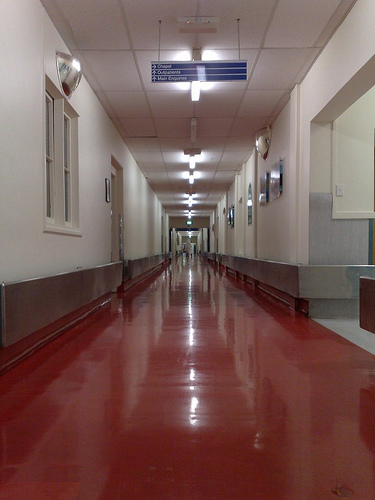June 20, 2013—The Oregon Patient Safety Commission has quickly learned that the process to create a new, voluntary program designed to reform medical malpractice will be a marathon, not a sprint.
The new program, created by Senate Bill 483 and signed into law by Governor John Kitzhaber in March, establishes a voluntary program allowing healthcare providers and patients to have a confidential conversation, with the option of having a mediator present, when serious adverse events occur. The purpose is to determine whether any conflict arising from medical errors and adverse events can be resolved outside of court and malpractice suits.
The program represents the most significant medical liability reform Oregon has accomplished in decades, and it’s the first time in the country that a program based on communication and full disclosure is being implemented state-wide. There are high hopes the program will reduce medical malpractice claims, but also restore trust, transparency and open communication between patients and their medical providers.
“We want to see these issues be worked out in a more compassionate, more appropriate setting than litigation,” said Gwen Dayton, the Oregon Medical Association’s general counsel. “We’re really hoping there is a big culture change.”
The program is modeled after one used by the University of Michigan’s Health System. Rick Boothman, the health system’s chief risk office, said the health system has seen enormous benefit from facilitating confidential conversations allowing physicians to fully disclose what happened.
“Patients realize doctors really do care. Doctors realize that patients are willing to understand. You can’t reproduce that in emails, and you can’t reproduce that with lawyers,” he said. “Most patients come just looking for a simple answer. They want a sense of accountability, and we have grossly underestimated that patients feel a responsibility to make sure it doesn’t happen to somebody else.”
As a result, the number of malpractice suits has dramatically dropped: in July 2001, the health system had 260 claims and lawsuits; currently, the health system has just over 100. “We almost never get a claim now that has no merit,” Boothman said.
The Oregon Patient Safety Commission will be in charge of the program. Although it won’t begin until July 2014, Bethany Walmsley, its executive director, said developing the program will take months. By the fall, the commission expects to have the program’s administrative rules written, which must be approved by the Legislature next February.
She said the most pressing issue is developing the software that hospitals and health systems will use to inform the commission that a provider and patient intend to engage in conversation after an adverse event.
The majority of the $1.54 million allocated to the commission by the Legislature for the 2013-2014 biennium will be used for the software’s development. The software will build upon what’s currently used to report adverse events to the commission, which tracks the data.
“One of the things we’re most attentive to is making sure we’re putting together a notice that…gathers information that we know will be important to understand,” but isn’t too long or cumbersome to fill out, Walmsley said..
The commission will also be working to develop a list of mediators it can give to physicians and patients as a resource, if such a person is necessary to resolve the conflict.
Walmsley said she was surprised to learn that there are no certification or licensing requirements for mediators. Because of that, the commission will develop “basic” criteria that might require mediators to have a certain number of years of experience as a mediator, a particular educational background, experience mediating medical malpractice or knowledge of the healthcare system.
“There’s already a handful of mediators in this state who are very well known and who work on medical malpractice,” Walmsley said. “Our goal is to make this as inclusive as possible.”
The biggest concern of the Oregon Medical Association, one of the groups most involved in negotiating the legislation, is that conversations between patients and providers will end up not being confidential, and be used in court.
The legislation explicitly said that any conversation between a patient and provider must remain confidential, with one exception: if it can be proved that the provider made a statement in trial that contradicts what was said during the initial conversation.
“We hope [that exception] is used in a limited way,” Dayton said. “If you can’t speak confidentially to the patient, then it won’t, frankly, be very useful to the physician or the patient.”
“If you don’t have a safe environment to have a conversation like that, each side is left to connect the dots with only partial information,” Boothman said.“If you’re inhibited because you’re afraid that a misstep or misstated comment is going to come back to haunt you, that really chills that conversation.”
In the coming months, she said the Oregon Medical Association will develop ways to communicate with physicians about the program and encourage them to “have a firm handle” and “be well-informed when they walk into these conversations.”
Walmsley said the commission will create its own educational campaign to inform providers about the program’s existence. The commission is planning to create a website for the program, convene forums and send information to health systems in different formats.
Boothman and others point out that it will take time before physicians and other providers actually use the new program. “It’s going to take some time for the physicians and other healthcare organizations to get used to the idea that they don’t have to be afraid,” Boothman said.
Image for this story by Giles Turnbull (CC BY-NC 2.0) via Flickr.
Amanda Waldroupe can be reached at [email protected].